第59章 2(2)
Fourthly, there must be a substrate underlying all processes of becoming and changing. What can this be in the present case? It is either the body or the soul that undergoes alteration: what is it that correspondingly becomes motion or becoming? And again what is the goal of their motion? It must be the motion or becoming of something from something to something else. But in what sense can this be so? For the becoming of learning cannot be learning: so neither can the becoming of becoming be becoming, nor can the becoming of any process be that process.
Finally, since there are three kinds of motion, the substratum and the goal of motion must be one or other of these, e.g. locomotion will have to be altered or to be locally moved.
To sum up, then, since everything that is moved is moved in one of three ways, either accidentally, or partially, or essentially, change can change only accidentally, as e.g. when a man who is being restored to health runs or learns: and accidental change we have long ago decided to leave out of account.
Since, then, motion can belong neither to Being nor to Relation nor to Agent and Patient, it remains that there can be motion only in respect of Quality, Quantity, and Place: for with each of these we have a pair of contraries. Motion in respect of Quality let us call alteration, a general designation that is used to include both contraries: and by Quality I do not here mean a property of substance (in that sense that which constitutes a specific distinction is a quality) but a passive quality in virtue of which a thing is said to be acted on or to be incapable of being acted on. Motion in respect of Quantity has no name that includes both contraries, but it is called increase or decrease according as one or the other is designated: that is to say motion in the direction of complete magnitude is increase, motion in the contrary direction is decrease.
Motion in respect of Place has no name either general or particular: but we may designate it by the general name of locomotion, though strictly the term 'locomotion' is applicable to things that change their place only when they have not the power to come to a stand, and to things that do not move themselves locally.
Change within the same kind from a lesser to a greater or from a greater to a lesser degree is alteration: for it is motion either from a contrary or to a contrary, whether in an unqualified or in a qualified sense: for change to a lesser degree of a quality will be called change to the contrary of that quality, and change to a greater degree of a quality will be regarded as change from the contrary of that quality to the quality itself. It makes no difference whether the change be qualified or unqualified, except that in the former case the contraries will have to be contrary to one another only in a qualified sense: and a thing's possessing a quality in a greater or in a lesser degree means the presence or absence in it of more or less of the opposite quality. It is now clear, then, that there are only these three kinds of motion.
The term 'immovable' we apply in the first place to that which is absolutely incapable of being moved (just as we correspondingly apply the term invisible to sound); in the second place to that which is moved with difficulty after a long time or whose movement is slow at the start-in fact, what we describe as hard to move; and in the third place to that which is naturally designed for and capable of motion, but is not in motion when, where, and as it naturally would be so. This last is the only kind of immovable thing of which I use the term 'being at rest': for rest is contrary to motion, so that rest will be negation of motion in that which is capable of admitting motion.
The foregoing remarks are sufficient to explain the essential nature of motion and rest, the number of kinds of change, and the different varieties of motion.